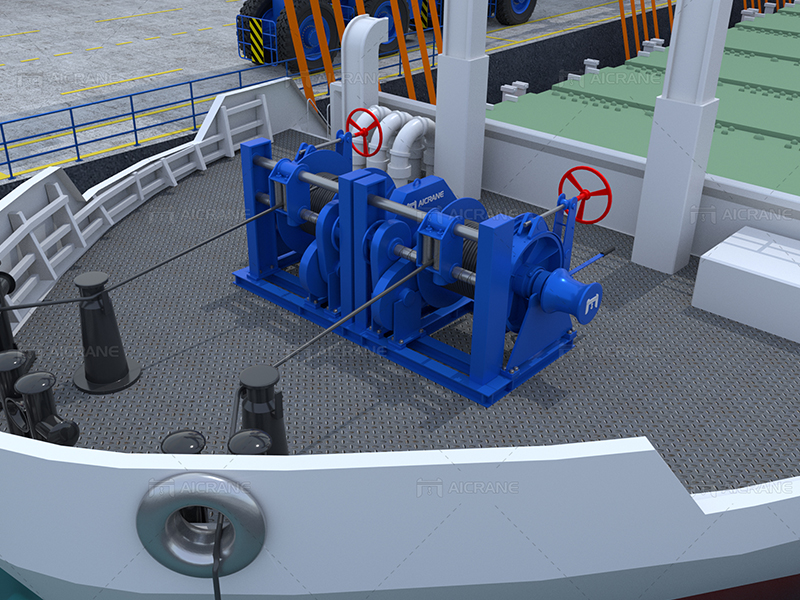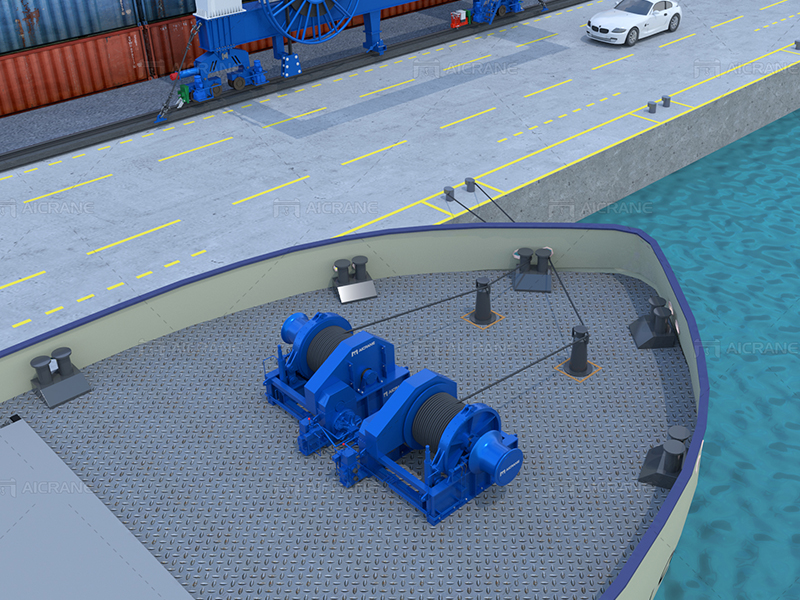Mooring winches play a crucial role in maritime operations, providing the necessary power to secure a vessel in place. Whether in a port, at anchor, or during offshore activities, the effectiveness of a mooring winch is determined by its components. In this article, we will delve into the main components of a mooring winch, exploring their functions and importance in ensuring the safety and stability of maritime operations.

Drum
The drum is a central component of the winch mooring and serves as the primary mechanism for winding and unwinding the mooring lines. Typically cylindrical in shape, the drum is responsible for holding and spooling the ropes or cables used for securing the vessel. Its size and capacity depend on the specific requirements of the vessel, considering factors such as size, weight, and intended use.
Motor
The motor is the powerhouse of the mooring winch, providing the necessary energy for the drum to operate. Electric, hydraulic, or pneumatic motors are commonly used, each offering distinct advantages based on the application. Electric motors are popular for their efficiency and ease of control, while hydraulic systems excel in providing high torque at lower speeds.
Gearbox
The gearbox is a critical component that connects the motor to the drum, allowing for the adjustment of rotational speed and torque. It plays a crucial role in optimizing the winch’s performance by adapting the power generated by the motor to meet the specific requirements of the vessel and the mooring operation. Gearboxes are designed with various gear ratios to ensure flexibility and adaptability in different scenarios.
Brake System
The brake system is essential for maintaining control over the mooring lines and preventing uncontrolled movements of the drum. It ensures that the drum stops promptly when required, contributing to the overall safety of the mooring process. Common brake systems include disc brakes and band brakes, each offering specific advantages depending on the winch’s size and intended use.

Clutch
The clutch is a mechanism that allows for the disengagement of the drum from the motor or gearbox, enabling manual operation in case of power failure or emergency situations. This component adds an extra layer of safety by providing an alternative means of controlling the mooring winch for ships when needed.
Control System
Modern mooring winches are equipped with advanced control systems that allow for precise and efficient operation. These systems often include electronic controls, sensors, and automation features to enhance the overall performance of the winch. Integrated control panels provide operators with the ability to monitor and adjust various parameters, ensuring optimal mooring line tension and alignment.
Frame and Foundation
The frame and foundation form the structural support for the mooring winch, ensuring stability and resistance to the dynamic forces exerted during mooring operations. The design and construction of the frame must consider factors such as the vessel’s size, the expected load, and the environmental conditions in which the winch will operate.
Conclusion
In conclusion, a mooring winch is a complex piece of machinery comprised of several key components working in tandem to secure a vessel in place. From the drum and motor to the brake system and control mechanisms, each component plays a crucial role in ensuring the efficiency and safety of mooring operations. As technology advances, the integration of smart control systems continues to enhance the capabilities of mooring winches, making them indispensable for maritime activities across the globe. To learn more about winches, visit https://winchmachines.com/
